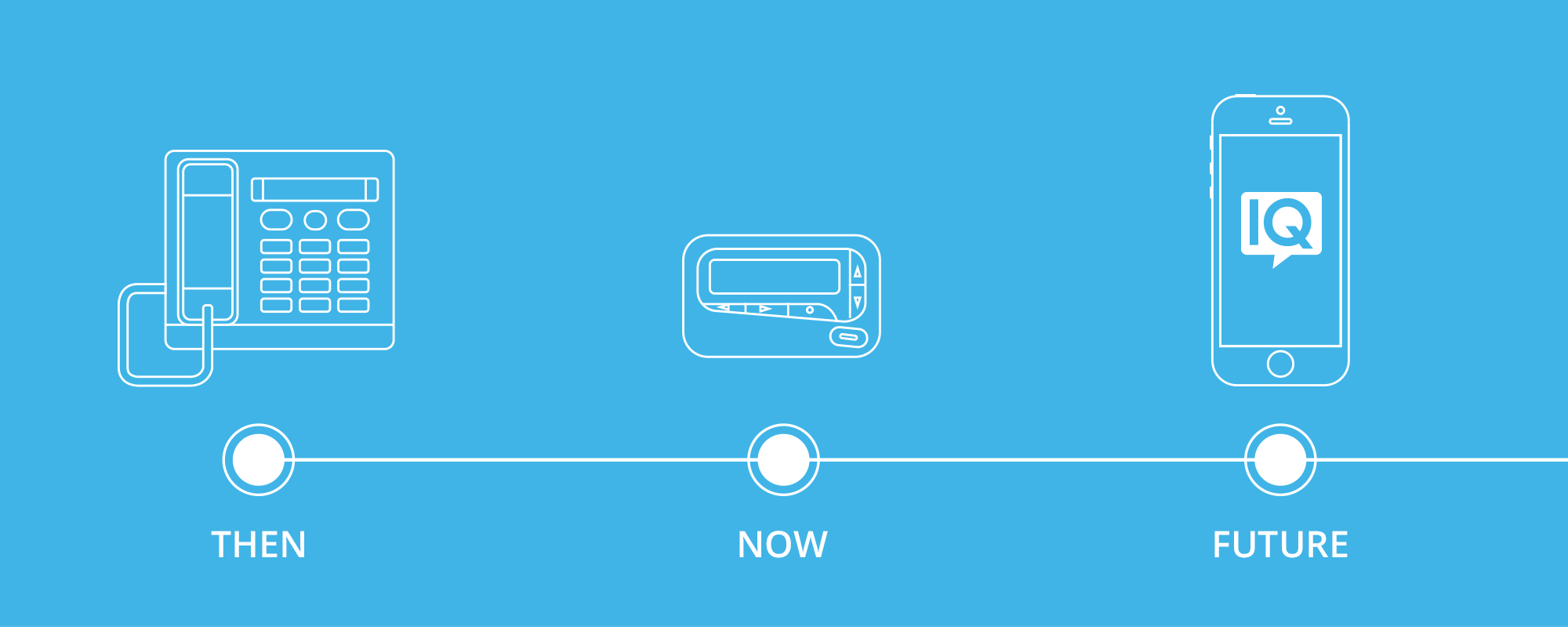Hospitals today are filled with a mix of communication systems including pagers, telephones, and desktop paging systems. Some of this technology is 20 or 30 years old and none of it seamlessly integrates with other healthcare IT systems, including the EHR. Hospital CIOs know that these communication systems are the source of inefficiencies in care delivery and outcomes, but ingrained communication practices and limited budgets create barriers to change.
Resistance to Change
Hospital pagers and overhead paging still make up the bulk of current hospital communications among the care team. As a one-way communication media, there are significant delays and inefficiencies associated with pagers, not to mention errors. One study found that 14% of pages were sent to the wrong physician, half of those being “urgent” or “emergency.”
Unfortunately, pagers are an ingrained aspect of hospitals: reliable, simple, and convenient. Doctors push back against their outright replacement and hospitals often struggle with the costs associated with evaluating, implementing and rolling out a pager alternative. On the flip side, the cost of communication breakdowns due to pager use continue to rise, with one estimate suggesting pager use costs $1.75M per hospital each year.
Adding Modern Communication Technology Doesn’t Solve Communication Problems
Many hospitals attempted to modernize healthcare communication by adding in new technologies such as secure texting. Unfortunately, many secure texting solutions simply became another technology layer on top of all these legacy communication technologies. Although secure, these technologies did not offer any workflow improvements over the non-compliant SMS texting which was already going on. Hospitals failed to noticeably improve the roadblocks in hospital communication.
Adding in a communication technology doesn’t necessarily improve workflow unless there is mass adoption. Mass adoption does not happen until you look at the big picture of hospital communications, which is just as much about people and process as it is about technology.
Hospital Communication Includes Technology, Processes and People
The problem with outright replacement of legacy communication technology is that this strategy does not recognize the significant impact or costs this has on end users and their work processes. A lack of recognition of people and processes can have a detrimental impact on patient care and outcomes.
Before implementing any new communication technology, it’s important to map out your technologies, processes, teams and roles to see how a your healthcare organization uses communication today. Based on this assessment, there may be opportunities to remove legacy technologies or to transition those technologies to modern options without impacting existing workflows. For example, at Telmediq we often work with hospitals on a gradual pager replacement strategy. In this, we allow clinicians to retain their pager number within our communication solution, plugging existing pager functionality and workflows into a modern, two-way communication system. Over time, pagers themselves can then be phased out.
At Telmediq, we’re not just going to hand you a piece of technology and walk away. Our approach has been to look at the whole communication ecosystem and figure out how to streamline and simplify that communication through the use of software. We want to remove the complexity of having 10-12 different communication systems and replace that with our Healthcare Communication Hub (HCH), which then drives all of your communication to improve patient outcomes and speed up care delivery. Yes, there’s still secure texting and voice communication, but that communication can now be simplified, co-ordinated and documented.
Driving Adoption Through Integration
Adoption of new communication technologies is often problematic. As noted, if you are not improving workflow or solving a critical issue, your new system is not going to succeed. At Telmediq, we do more than just simplify complex communication workflows, we provide value through integration. We’ve found that integrating with the EHR and other clinical systems (lab systems, alarms, nurse call) is the key to driving mass adoption.
Even a single integration point with the EHR has the potential to revolutionize communication. For example, updates to the EHR can be pushed out to the care team. Intelligent filtering rules to alarm systems can help reduce alarm fatigue. Nurse calls can be routed to nurses, who can respond or forward to support staff, improving both the patient experience and nurse workflow. These integrations solve critical pain points in clinical workflow and help drive adoption rates of our Healthcare Communication Hub (HCH), helping realize the positive outcomes of a new communication system very quickly.
Evolve your healthcare communication system by respecting the unique healthcare processes and professionals in your organization. Want to learn more? Contact us at Telmediq to arrange a no-obligation mapping of your hospital communications.


